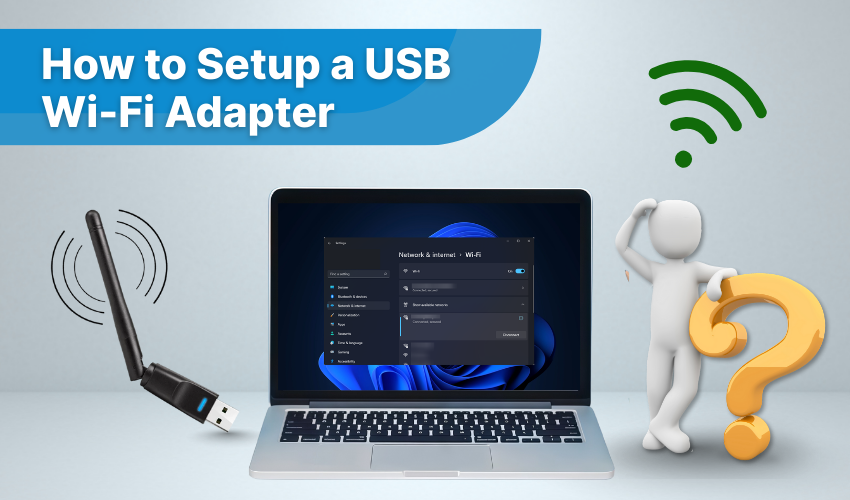How to setup a USB Wi-Fi adapter

How to Setup a USB Wi-Fi Adapter
Getting a new wireless adapter can solve weak signals or replace a broken card. Many users choose a USB WiFi setup because it is affordable, portable, and easy to install. This guide explains how to handle the process in clear steps, including driver installation, internet setup, and troubleshooting. Whether you use Windows, macOS, or Linux, the methods below will help.
Why Choose a USB Wi-Fi Adapter
A wireless adapter in USB form works as an external network card. It plugs into a USB port and lets the computer connect with available wireless networks. Unlike built-in cards, a USB option is easy to replace, requires no internal hardware work, and offers flexibility. If you switch between computers, you can carry the adapter with you. For many households, a USB WiFi setup saves time and money compared with replacing the internal card.
Preparing for the Setup
Before starting the internet setup process, check these items:
- Compatibility – Ensure the adapter supports your operating system. Most brands list Windows, macOS, and Linux support.
- Drivers – Many adapters work immediately, but some need driver installation. The drivers may come on a small CD or be available online.
- USB Port – Use a free USB 2.0 or 3.0 port. A USB extension cable can improve placement if your system sits under a desk.
Method 1: Windows USB WiFi Setup
Most people use Windows, so these steps are common:
- Plug the wireless adapter into an open USB port.
- Wait for Windows to detect the device. If drivers load automatically, you may see a Wi-Fi symbol in the taskbar.
- If drivers are missing, insert the CD that came with the adapter, or download the latest version from the maker’s site.
- Once installed, click the Wi-Fi icon in the taskbar.
- Select the preferred wireless network and enter the password.
- Confirm internet setup by opening a browser and loading a page.
Windows usually completes the USB WiFi setup in minutes, especially with newer devices.
Method 2: macOS USB WiFi Setup
Apple computers often recognize adapters directly. Follow these steps:
- Connect the wireless adapter to a USB port.
- If macOS detects it, a Wi-Fi symbol appears in the menu bar.
- If nothing shows, open “System Preferences” → “Network.”
- Look for the adapter in the list of interfaces.
- Add it if needed, then select your network from the Wi-Fi list.
- Complete the internet setup by entering your password and saving settings.
For older adapters, you might need to download a driver package from the maker.
Method 3: Linux USB WiFi Setup
Linux users often manage adapters through built-in drivers. Steps can vary by distribution, but a general guide looks like this:
- Insert the wireless adapter into a USB slot.
- Open a terminal and type "lsusb" in order to confirm the system detects the device.
- If the adapter is listed, try connecting by clicking the network icon in the top bar.
- Choose your wireless network correctly and enter the password.
- If no driver is present, install one using your package manager (for example, sudo apt install firmware-realtek).
- After driver setup, reconnect and test the internet setup.
Troubleshooting Tips
Even the best wireless adapter may face small issues. Consider these points:
- Weak signal – Use a USB extension cable to move the adapter higher or closer to the router.
- Driver errors – Always download the latest version from the official website.
- Network not found – Restart both router and computer before repeating the USB WiFi setup.
- Slow speed – Switch from a crowded 2.4 GHz band to a 5 GHz option if supported.
Conclusion
The described USB WiFi setup process works smoothly across Windows, macOS, and Linux, providing reliable internet without any hardware changes. The provided methods above lead to strong connections and easier use. Most small problems disappear with a few quick fixes.
